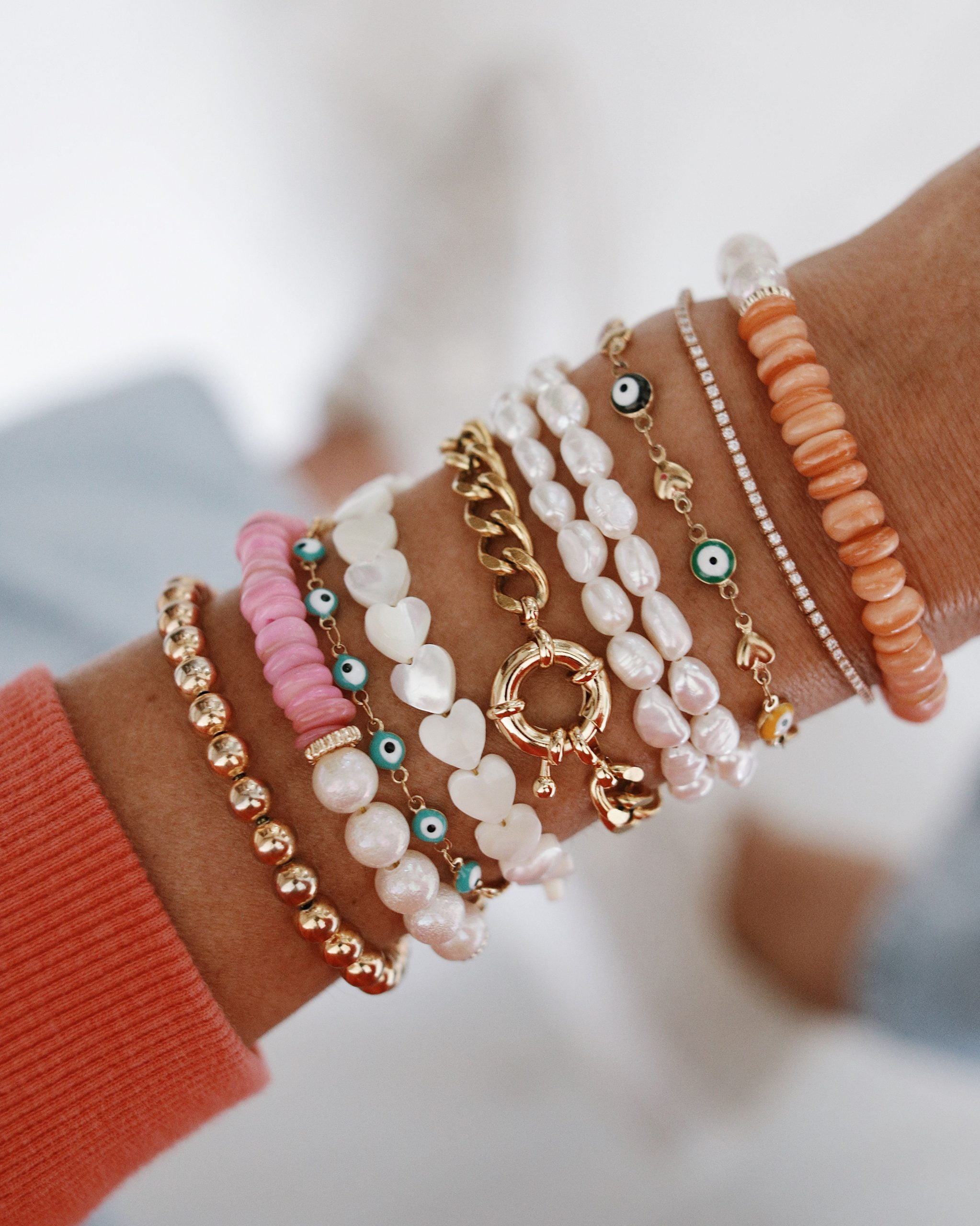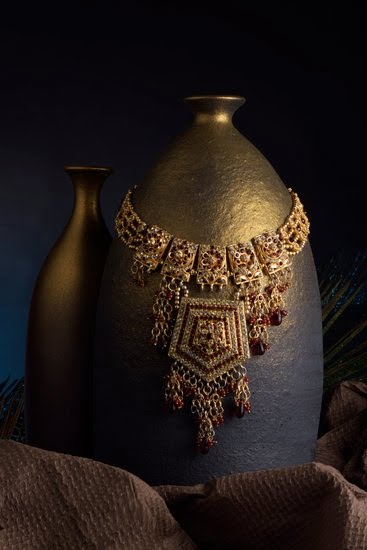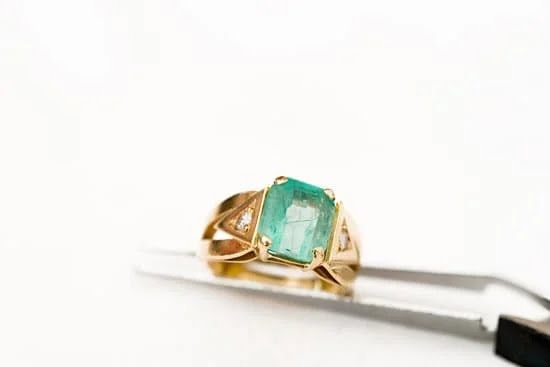Diamond jewelry holds both financial and sentimental value for many individuals. In this article, we will delve into the multifaceted worth of diamond jewelry, exploring its significance in the market and the emotions it can evoke. Understanding the value of your diamond jewelry is essential when considering selling or making future decisions regarding your precious pieces.
Diamond jewelry has long been seen as a symbol of luxury, elegance, and enduring love. Beyond its aesthetic appeal, diamond jewelry carries significant monetary value due to its scarcity and desirability. However, it is important to recognize that the worth of diamond jewelry extends beyond its market value. Many people also attach sentimental meaning to their pieces, whether they are heirlooms passed down through generations or gifts from loved ones on special occasions.
When evaluating the market value of diamond jewelry, several factors come into play. Carat weight, cut, color, and clarity all contribute to determining the fair price for a particular piece. Additionally, certification from reputable gemological laboratories is crucial in assessing a diamond’s authenticity and quality accurately. By understanding how market value is determined and the importance of certifications and appraisals, you can gain a better understanding of what to expect when navigating the world of diamond sales.
The Market Value of Diamond Jewelry
The market value of diamond jewelry is an important factor to consider when determining the worth of your precious pieces. Understanding how the market determines the value can help you make informed decisions when it comes to buying, selling, or appraising diamond jewelry.
When assessing the market value of diamond jewelry, there are several key factors that come into play. These factors include the carat weight, cut, color, and clarity of the diamonds. The combination of these characteristics determines the overall quality and rarity of the diamond, which greatly influences its market value.
Certification and reputable appraisals also play a vital role in determining the market value of diamond jewelry. Certification from respected gemological laboratories such as GIA (Gemological Institute of America) or AGS (American Gem Society) offers assurance of a diamond’s quality and authenticity. Reputable appraisers with expertise in evaluating diamonds can provide professional opinions on the monetary worth of your jewelry.
To better understand how these factors impact the market value, here is a breakdown:
- Carat weight: Diamonds are weighed in carats, and generally, higher carat weights result in higher prices.
- Cut: The cut refers to how well a diamond has been shaped and faceted. A well-cut diamond will have superior light reflection and sparkle, therefore increasing its value.
- Color: Diamonds range from colorless to yellow or brown hues. The less color present in a diamond, especially for larger stones, typically results in a higher value.
- Clarity: This refers to any internal or external flaws present within a diamond. The fewer imperfections or blemishes found within a stone, the more valuable it becomes.
By understanding these key factors and obtaining proper certifications and appraisals when necessary, you can gain insight into the market value of your diamond jewelry. Armed with this knowledge, you’ll be better equipped to make informed decisions when it comes to buying or selling your valuable assets.
Selling Diamond Jewelry
When it comes to selling diamond jewelry, individuals have two primary options: cash offers or consignment. Each method has its advantages and disadvantages, and understanding them can help you make an informed decision about which option is best for you.
Cash offers provide an immediate financial return. This option involves finding potential buyers who are willing to purchase your diamond jewelry for a set price. The process typically involves getting multiple appraisals to determine the market value of your piece and then negotiating with potential buyers to secure the best offer.
To maximize cash offers, it’s important to accurately gauge market demand. Researching current trends and understanding the factors that influence diamond prices can help you determine a realistic asking price for your jewelry. Additionally, obtaining multiple appraisals from reputable jewelers ensures that you have an accurate assessment of your piece’s value.
On the other hand, consigning your diamond jewelry offers the potential for higher returns but requires patience. When you consign your jewelry, you leave it in the hands of a reputable jeweler or auction house who will sell it on your behalf. This method allows you to wait for the right buyer who is willing to pay a premium price for your piece.
Choosing a trustworthy consignment partner is crucial when opting for this method. Look for established jewelers or auction houses with a strong reputation in the industry. It’s also important to carefully review any consignment agreement to understand the terms and conditions of the sale.
Ultimately, whether you choose cash offers or consignment depends on your specific circumstances and goals. If you need immediate funds or prefer a quicker sale, cash offers may be the better choice for you. However, if you’re willing to wait for potentially higher returns and have confidence in finding the right buyer, consignment could be more suitable.
Whichever method you decide on, remember that selling diamond jewelry is not just about its monetary value. Diamond jewelry often holds emotional and sentimental significance, and it’s essential to consider these factors when making your decision.
Cash Offers
When it comes to selling diamond jewelry, one option that offers an immediate financial return is through cash offers. This section will delve into the process of selling diamond jewelry for immediate cash and provide tips for maximizing the value of these offers.
Step 1: Getting Multiple Appraisals
One important step in maximizing the cash offer for diamond jewelry is to get multiple appraisals. Different appraisers may provide varying evaluations, so obtaining multiple opinions will give a better understanding of the jewelry’s market value. It is crucial to choose certified and reputable appraisers who specialize in diamonds to ensure accurate assessments.
Step 2: Negotiating with Buyers
After receiving multiple appraisals, it’s time to negotiate with potential buyers. It’s recommended to research different buyers, including jewelers and online platforms, and compare their reputations and customer reviews. Understanding the current market demand for diamond jewelry will also help during negotiations.
Tips for Maximizing Cash Offers
To maximize cash offers, there are a few key tips to keep in mind. Firstly, timing can affect the value of diamond jewelry, so staying informed about market trends and demands can help determine when it’s best to sell. Secondly, ensuring the jewelry is in excellent condition by cleaning and making any necessary repairs or improvements can increase its appeal to potential buyers. Lastly, being open to negotiation and considering counteroffers can lead to more favorable financial returns.
Selling diamond jewelry for immediate cash offers provides a quick way to obtain financial returns. However, it’s essential for sellers to invest time and effort in research and preparation to ensure they receive fair value for their precious pieces. By following the steps outlined above and keeping these tips in mind, individuals looking to sell their diamond jewelry can confidently navigate this process and make informed decisions based on their goals.
Consignment
When it comes to selling diamond jewelry, consignment can be a viable option for those seeking potentially higher financial returns. Consignment involves entrusting your diamond jewelry to a reputable jeweler or auction house, who will then display and promote it to potential buyers on your behalf. This method allows you to wait for the right buyer while maximizing your chances of obtaining a higher price.
One of the key benefits of consignment is the possibility of receiving a higher financial return compared to selling for immediate cash offers. By allowing your diamond jewelry to be displayed in a professional setting and marketed by experts in the field, you increase its visibility and appeal to potential buyers who are willing to pay top dollar for high-quality pieces.
The longer time frame associated with consignment gives jewelers and auction houses the opportunity to showcase your jewelry during events or exhibitions where targeted buyers are more likely to be present.
However, it’s important to choose a trustworthy consignment partner who can effectively market your diamond jewelry and negotiate on your behalf. Look for jewelers or auction houses with a proven track record of successfully selling high-value items and ask about their marketing strategies and target audience. Additionally, carefully read and understand any consignment agreements before proceeding, ensuring that you are comfortable with the terms, fees, and conditions.
| Pros | Cons |
|---|---|
| Possibility of higher financial returns | Requires patience and longer time frame |
| Access to targeted buyers through professional marketing | Risk of not finding a buyer at the desired price |
| Professional negotiation on your behalf | Potential consignment fees or commissions |
Other Options
In addition to selling diamond jewelry for cash or consigning it, there are other options available that can provide value and meet specific needs. One such option is trading in or upgrading diamond jewelry. This can be an attractive choice for individuals who are looking for a different style or want to upgrade to a higher quality diamond.
Trading in diamond jewelry allows individuals to exchange their current piece for another piece of jewelry, usually from the same jeweler. The value of the trade-in is deducted from the cost of the new piece, resulting in a reduced price. This option can be especially beneficial when someone wants to change their jewelry style but still wants to maintain some sentimental value by having a diamond piece.
Upgrading diamond jewelry involves replacing one’s current diamond with a higher quality stone. This may entail choosing a larger size, better cut, improved color, or higher clarity grade. The original diamond is taken as credit towards the upgraded stone, reducing the overall cost.
One advantage of trading in or upgrading diamond jewelry is that it allows individuals to stay within the world of diamonds while exploring different options that better suit their preferences or lifestyle changes. Additionally, working with a reputable jeweler can provide assurance that both the trade-in allowance and upgraded piece are fairly valued.
However, it is important to consider potential disadvantages as well. Trading in or upgrading may not always yield as much financial return compared to other selling methods such as cash offers or consignment. It also requires careful evaluation and comparison of prices from various jewelers to ensure that fair value is provided for both the trade-in and upgraded pieces.
Overall, trading in or upgrading diamond jewelry presents an option that caters to those seeking alternative solutions beyond simply selling. It provides an opportunity to enjoy new styles and higher quality diamonds while preserving some emotional connection with their existing pieces.
Emotional Value and Inheritance
Preserving Sentimental Value
Diamond jewelry is often cherished for more than just its monetary value. It can hold significant emotional value, especially when it carries sentimental meaning or is passed down through generations. Inherited diamond jewelry, in particular, may have both monetary and sentimental worth that should be carefully considered.
When faced with the decision of what to do with inherited diamond jewelry, it is important to evaluate its sentimental value to you and your family. Consider whether the piece holds a special place in your heart or if it has sentimental significance that aligns with your personal values and family traditions. If the emotional connection outweighs any immediate financial need, keeping the piece as an heirloom may be the best choice.
It’s also worth exploring ways to preserve the sentimental value of inherited diamond jewelry if you decide not to keep it for yourself. One option is to have the piece redesigned or repurposed into a new piece of jewelry that better suits your style or preferences, while still preserving the sentimentality and memory associated with it.
Consulting with a trusted jeweler can provide insight into possible redesign options and ensure that any modifications are done with care and respect for the original piece.
Monetary Considerations
While emotional value plays a significant role in deciding what to do with inherited diamond jewelry, it’s also important to consider its potential monetary worth. In some cases, selling the piece may provide financial benefits that could be used for different purposes such as education expenses, home renovations, or investments.
If considering selling inherited diamond jewelry, it’s essential to have a reputable appraisal done by a certified gemologist or experienced appraiser who specializes in diamonds. This will help establish an accurate market value for the piece and provide confidence when navigating potential sales options.
Before selling, research various avenues available for selling diamond jewelry such as online marketplaces dedicated to fine jewelry sales or reputable dealers specializing in diamond buying. It may be worth getting multiple offers to ensure you are receiving a fair price for your inherited piece.
Handling Estate Considerations
Inherited diamond jewelry may also come with estate considerations that need to be addressed. Depending on the laws and regulations in your jurisdiction, there could be tax implications or paperwork requirements associated with selling or transferring ownership of the jewelry.
Consulting with an estate attorney can provide guidance on how to handle such matters effectively. They can also assist in ensuring that all legal obligations are met, allowing for a smooth and legally compliant transfer of ownership or sale of the inherited diamond jewelry.
By recognizing both the emotional and monetary value of inherited diamond jewelry, individuals can make informed decisions about how best to preserve sentimental worth while considering any financial benefits that may arise from selling or repurposing these treasured pieces.
Conclusion
As discussed throughout this article, diamond jewelry holds both a significant market value and emotional worth. Understanding the factors that influence the market value of diamond jewelry, as well as the various options for selling or trading it in, is crucial in making informed decisions. The worth of diamond jewelry goes beyond its monetary value and extends to the sentimentality attached to it.
In evaluating the market value of diamond jewelry, factors such as carat weight, cut, color, and clarity are key determinants. Certification from reputable organizations and professional appraisals play an important role in establishing the market value. It is recommended to seek multiple appraisals to ensure accuracy.
When it comes to selling or trading diamond jewelry, two primary options are cash offers and consignment. Cash offers provide an immediate financial return but may not always offer the highest value. Consignment allows for patience in waiting for the right buyer and potentially obtaining a higher financial return.
Another option to consider is trading in or upgrading diamond jewelry. This can be advantageous when looking for a different style or upgrading to a higher quality diamond. However, it is essential to carefully assess trade-in offers and weigh the advantages and disadvantages of this method.
Beyond its market value, diamond jewelry often carries tremendous emotional significance. Inherited diamond jewelry may have both sentimental and monetary worth. When faced with inherited pieces, individuals should carefully consider their own personal attachment and familial significance before deciding whether to sell or keep them.
| Recommended Resources |
|---|
| – “The Diamond Guide: How to Buy Diamonds” by Renee Newman |
| – Gemological Institute of America (GIA) – www.gia.edu |
| – American Society of Appraisers (ASA) – www.appraisers.org |
Recommended Resources
In conclusion, understanding the worth of your diamond jewelry is essential when it comes to making informed decisions about selling, consigning, or trading in your precious pieces. Throughout this blog post, we have explored the various factors that influence the market value of diamond jewelry, from carat weight and cut to color and clarity. We have also discussed the advantages and disadvantages of cash offers versus consignment, as well as the potential risks and benefits associated with each method.
Whether you choose to sell for immediate cash offers or consign your diamond jewelry for potentially higher returns, it is crucial to approach the process with knowledge and caution. By obtaining multiple appraisals and partnering with reputable buyers or jewelers, you can ensure that you receive fair market value for your pieces. Additionally, those considering consignment should carefully select a trustworthy partner who can help navigate the process and maximize their chances of finding the right buyer.
It is important to remember that while diamond jewelry holds significant monetary value, it also carries emotional significance. Passing down inherited diamond jewelry through generations can provide both sentimental and financial worth. When faced with such items, take time to consider their personal or familial significance before deciding whether to sell or keep them.
In navigating the world of diamond jewelry evaluation and sales, there are many resources available to assist you. To further research and evaluate the worth of your diamond jewelry, we recommend reputable books, websites,and appraisal services. These resources can provide valuable information and guidance as you make decisions based on your specific circumstances and goals.
Ultimately, by understanding the market value of your diamond jewelry and exploring various options for selling or preserving its worth, you can make confident choices about how best to leverage these treasures in a way that aligns with your needs and desires.
Frequently Asked Questions
What is the return value of diamond jewelry?
The return value of diamond jewelry can vary depending on several factors. One key aspect is the quality and characteristics of the diamond itself, such as the cut, clarity, color, and carat weight. High-quality diamonds with excellent attributes tend to hold their value better over time compared to lower-quality diamonds.
Additionally, factors like market demand, trends, and rarity also play a role in determining the return value of diamond jewelry. It’s important to note that while diamonds generally retain some value, they are typically not considered a liquid asset that can be easily sold for their original purchase price.
What is the return policy of diamonds?
The return policy of diamonds typically depends on the specific policies set by each jeweler or retailer. While some jewelry stores may offer a flexible and generous return policy for diamonds, others might have more stringent rules or even designate diamonds as non-returnable items due to their high-value nature and vulnerability to potential damage or replacement with fake stones.
It’s advisable to check the return policy before purchasing diamond jewelry to understand any time limitations, restocking fees (if applicable), condition requirements for returns, and whether a refund or store credit will be provided.
Can you sell diamonds back to the jewelry store?
In many cases, you can sell diamonds back to jewelry stores; however, this is contingent upon several factors including the jeweler’s policies and market conditions at the time of selling. Some jewelers may offer buy-back programs where they repurchase diamonds they sold previously or provide trade-in options towards new purchases.
The buy-back price will likely be influenced by factors like the current market value of diamonds, demand for specific types of stones, and the overall quality and condition of your diamond(s). It’s recommended to research different jewelers’ buying practices beforehand or consult with professionals in the field who specialize in evaluating and appraising diamond jewelry if you wish to sell your diamonds back to a jewelry store.

Welcome to my jewelry blog! My name is Sarah and I am the owner of this blog.
I love making jewelry and sharing my creations with others.
So whether you’re someone who loves wearing jewelry yourself or simply enjoys learning about it, be sure to check out my blog for insightful posts on everything related to this exciting topic!





